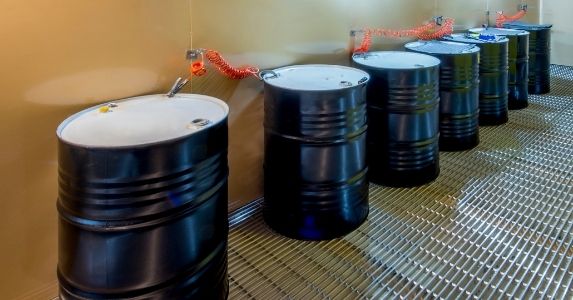SPCC Secondary Containment: What’s Appropriate for Your Facility?
Are you confused about what you have to do to mitigate potential releases of oil at your facility? There are a ton of requirements when it comes to the EPA’s Spill Prevention, Control, and Countermeasure (SPCC) rule, but the most complicated is figuring out what type of secondary containment measures you need to follow.
There are two types of secondary containment: specific (or sized) secondary containment and general secondary containment. You may be asking yourself, “How do I know which of these applies to my facility?! I want to choose the correct form of containment so I can best protect my workers and the environment from oil spills!” This post is here to help. Specific secondary containment is designed to address possible releases from major container failures, while general secondary containment is designed to address possible oil discharges from all regulated areas of your facility.
Specific (Sized) Secondary Containment
While general secondary containment applies to the whole facility’s oil storage, specific (sized) secondary containment (SSC) is only applicable in certain situations. SSC is required at your facility if you have:
- Loading/unloading racks
- Bulk storage containers (including mobile or portable tanks but NOT mobile refuelers or other non-transportation-related tank trucks)
- Production facility bulk storage containers, including tank batteries, separation, and treating equipment
SSC must be designed so the container provides enough volume to contain the amount of oil in the single largest oil compartment or container plus sufficient freeboard to contain any additional precipitation. Each facility has unique requirements for the amount of sufficient freeboard. Sufficient freeboard is calculated based on the capacity of oil storage of the tank, safety considerations, general secondary containment already present at the facility, local precipitation conditions, frequency of drainage and inspections, and many other factors.
A common industry rule-of-thumb for calculating sufficient freeboard is the capacity of the largest oil container or compartment plus 10 percent. The SSC should be able to withstand a “25-year, 24-hour storm event.” While it is not required for calculations to be added to your SPCC plan, the EPA recommends that you maintain those calculations on site for as long as the secondary containment method is in use. Your SSC method must be approved by an EPA inspector who will determine if your containment method is adequate to protect navigable waters and adjoining shorelines.
General Secondary Containment
General secondary containment (GSC) is required at your facility wherever oil is being handled or used in amounts that would be considered regulated. “Appropriate containment” will take into consideration the most likely amount of oil that can be discharged, the flow rate of the oil, the slope of the ground, the permeability of the ground, the spill response time of facility personnel, and more. Usually GSC is constructed as passive measures at a facility.
“The entire containment system, including walls and floor, must be capable of containing oil and must be constructed so that any discharge from a primary containment system, such as a tank or pipe, will not escape the containment system before cleanup occurs.” (40 CFR 112.7(c))
Some examples include dikes, berms, curbs, drip pans, sumps, oil retention ponds, and sorbent materials. The GSC requirements are broad to account for all the different measures that can be taken to stop oil from reaching navigable waters, and each facility is unique.
Other considerations include:
- The size of your facility
- Where your facility is located
- Where your oil storage is located on your facility grounds
The geography of your location can significantly impact the type of GSC you can implement at your facility. Use good engineering practices to design these methods so that oil will be contained as best as possible until cleanup efforts are put into action.
Ensure You Have the Proper Secondary Containment
Several factors will determine what type of secondary containment you will need at your facility. Get creative with solutions that will fit your facility, but make sure you are meeting the requirements to project human health and the environment. If you have questions about your facility’s unique requirements or need help creating a compliant SPCC plan, please click the button below to contact us. Our team of experts is skilled at creating SPCC plans and is excited to help.






